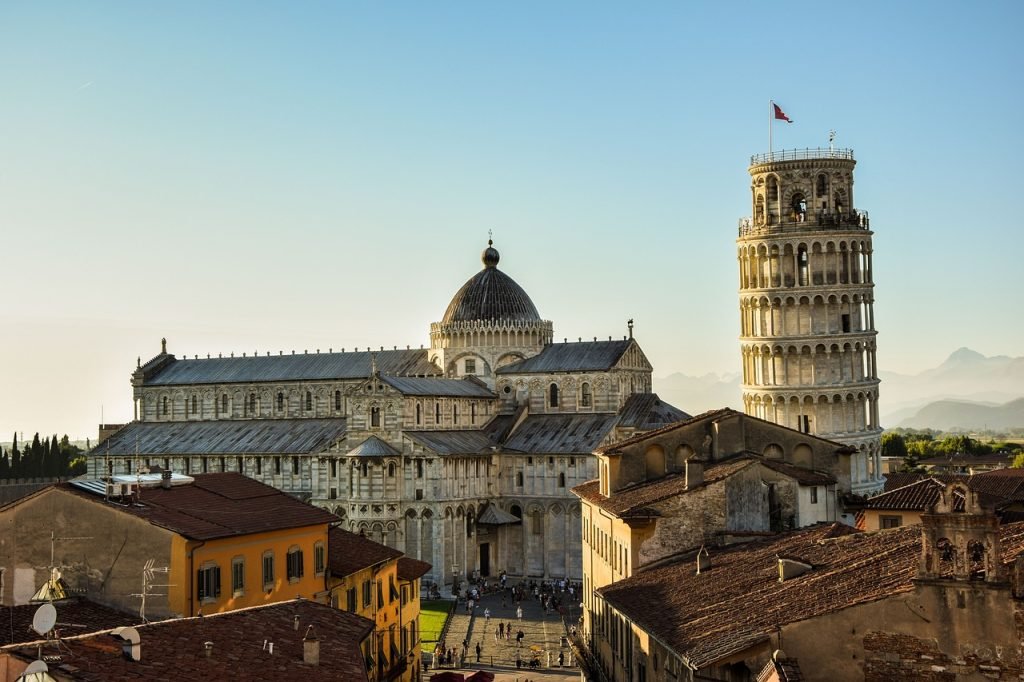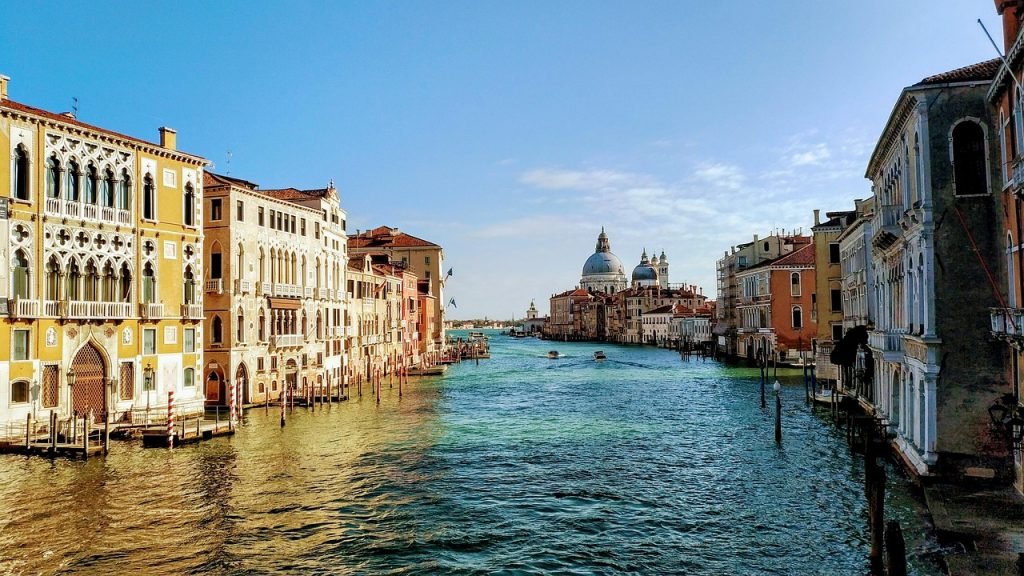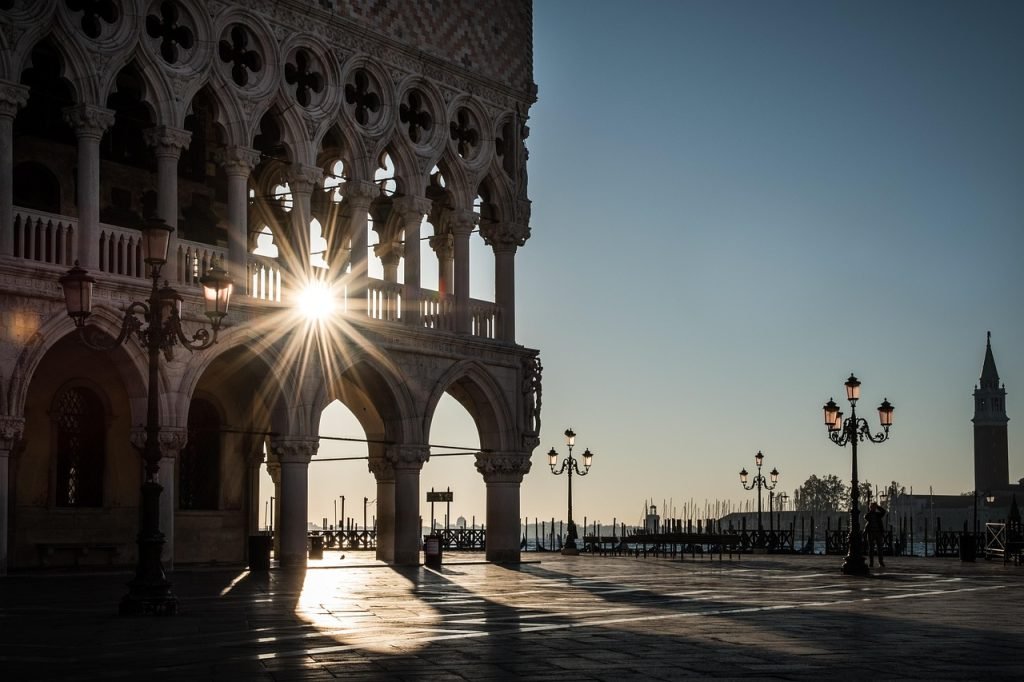There’s something profoundly satisfying about an itinerary that moves from Renaissance masterpieces to medieval ramparts, from iconic architectural wonders to dramatic coastal cliffs where colorful houses cling impossibly to rocky shores. Northern Tuscany combined with the Cinque Terre offers exactly this progression—a journey that captures the full spectrum of Italian beauty, from Florence’s artistic treasures to the raw, elemental drama of Liguria’s most famous coastline.
This carefully crafted route takes you through landscapes that have inspired everyone from Dante to contemporary travel writers, connecting inland Tuscany’s rolling hills and historic cities with the Mediterranean’s most spectacular coastal scenery. It’s an itinerary that rewards both culture enthusiasts and nature lovers, offering world-class museums in the morning and sunset hikes along ancient coastal paths in the evening.
The beauty of focusing on Northern Tuscany lies in its accessibility and variety. Unlike the more touristy southern regions around Siena and the Chianti hills, northern Tuscany maintains an authenticity that feels less performed, more genuinely lived-in. Combined with the Cinque Terre’s UNESCO-protected coastal drama, this route delivers quintessential Italian experiences without the overwhelming crowds of more famous circuits.
Florence: Renaissance Capital and Cultural Foundation (2-3 Nights)
Florence serves as your cultural North Star for this journey, the city where the Renaissance was born and where artistic genius reached heights that still leave visitors speechless centuries later. Starting here provides the historical and artistic context that enriches everything you’ll encounter later—the medieval architecture of Lucca, the maritime wealth of Pisa, and even the ancient fishing traditions of the Cinque Terre.
Time allocation: Plan 2 nights for core Florence experiences, or extend to 3 nights if you want to include day trips to Tuscan wine regions, Siena, or other nearby destinations.
Florence hits you like an artistic thunderbolt. The concentration of Renaissance masterpieces within such a compact historic center is unmatched anywhere on earth. Walking from the Duomo to the Uffizi to the Palazzo Pitti feels like moving through chapters of an art history textbook, except the paintings, sculptures, and architecture are vibrantly real and impossibly beautiful.
Days 1-2: Florence’s Artistic Heart
Dawn at the Duomo: Start your first morning before sunrise at the Cathedral complex. The early hours provide two precious gifts—manageable crowds and the magical experience of watching Florence wake up as the first light illuminates Brunelleschi’s dome. The climb to the dome’s top remains mandatory; the engineering brilliance of the 15th century still impresses modern architects, and the views of Tuscany stretching to distant hills are worth every step.
Uffizi Mastery: Book your Uffizi tickets in advance. The gallery houses the world’s greatest collection of Renaissance art, but don’t try to see everything—focus on the masterpieces that speak to you. Botticelli’s “Birth of Venus” and “Primavera” represent Renaissance humanism at its most sublime, while Leonardo’s “Annunciation” showcases the technical innovation that revolutionized Western art.
Oltrarno Authenticity: Cross the Arno River to explore Florence’s “left bank”. The Palazzo Pitti houses multiple museums and the Boboli Gardens, but the real treasure is wandering workshops where leather workers, jewelers, and restoration experts maintain traditions passed down through generations.
Day 3: Florentine Life and Hidden Gems
Mercato Centrale and Sant’Ambrogio: Experience Florence’s authentic daily rhythm at its markets. The renovated Mercato Centrale offers gourmet versions of Tuscan specialties, while Sant’Ambrogio market maintains the raw energy of real Florentine commerce. This is where you’ll encounter the city’s famous directness—vendors who speak their minds and expect customers to know what they want.
Santo Spirito and San Frediano: These neighborhoods represent contemporary Florentine life away from tourist crowds. Local bars serve proper aperitivo (6-8 PM), tiny restaurants offer authentic Tuscan cuisine, and the conversation flows in rapid Florentine Italian that sounds like verbal music.
Florentine cuisine emphasizes simplicity and local ingredients taken to their highest expression. Bistecca alla Fiorentina represents this philosophy perfectly—massive T-bone steaks from Chianina cattle, seasoned simply with salt. The meat quality is so exceptional that any elaborate preparation would be considered vandalism.
Try ribollita (literally “reboiled”—a vegetable and bread soup that improves with reheating), and any pasta with wild boar sauce. The local wines have evolved dramatically—modern Tuscan producers create bottles that rival France’s finest while maintaining distinctly Italian character.
Lucca and Pisa: Medieval Perfection Preserved (2 Nights)
The train journey from Florence to Lucca takes just over an hour, carrying you through landscapes that gradually transition from Renaissance grandeur to medieval intimacy. Lucca announces itself with intact Renaissance walls that completely encircle the historic center—a rarity in Italy, where most cities expanded beyond their original fortifications centuries ago.
Strategic advantage: Using Lucca as your base for 2 nights allows you to experience the city’s peaceful evening atmosphere while using one full day for a comfortable round-trip to Pisa—just 30 minutes by train each way.
Lucca feels like a medieval city that accidentally survived into the modern era. The walls, now converted into a tree-lined park that provides a 4-kilometer walking/cycling loop around the entire city, create an atmosphere of gentle separation from contemporary rush. Inside these walls, time moves differently—more deliberately, more gracefully, more in harmony with human rather than mechanical rhythms.
The Lucchesi (Lucca’s residents) are distinctly different from Florentines—warmer, more approachable, proudly provincial in the best sense. They’ve maintained their dialect, their local traditions, and their skepticism toward rapid change. Lucca never became a major tourist destination, which means it remained authentically itself rather than adapting to external expectations.
Day 1: Walls, Towers, and Medieval Magic
The Walls Walk: Start early morning with a complete circuit of Lucca’s walls. Built in the 16th-17th centuries, these fortifications were never tested in battle and today provide elevated views of both the medieval city within and the Tuscan countryside beyond. Rent a bicycle for the most authentic experience—locals have been cycling these walls for generations.
Torre Guinigi: This 14th-century tower topped with oak trees represents Lucca’s unique approach to medieval architecture. The climb is demanding but rewards you with panoramic views and the surreal experience of standing among trees 45 meters above street level. The symbolism is purely Lucchese—prosperity rooted in strength but reaching toward beauty.
San Michele in Foro: Built on the site of the ancient Roman forum, this church showcases Pisan Romanesque architecture at its most refined. The facade’s intricate marble work and the interior’s serene atmosphere provide perfect introduction to Lucca’s distinctive artistic heritage.
Day 2: Pisa Day Trip from Lucca
Perfect day trip logistics: The short 30-minute train journey from Lucca to Pisa makes this an ideal day excursion. Morning trains depart frequently, allowing you to reach Pisa by 9 AM and return to Lucca for dinner, avoiding the need to change accommodations for just one night.
Piazza dei Miracoli: Medieval Maritime Wealth
The “Square of Miracles” represents medieval Pisan power at its peak. The cathedral, baptistery, tower, and cemetery form an architectural ensemble that proclaimed Pisa’s wealth and sophistication to the medieval world. The famous lean of the tower (now stabilized through modern engineering) resulted from soft ground rather than architectural incompetence—medieval Pisan builders were actually extremely skilled.
Cathedral Interior: While tourists photograph the exterior, the cathedral’s interior reveals the artistic treasures that Pisan merchants collected throughout the Mediterranean. The bronze doors and the marble pulpit represent medieval craftsmanship at its finest.
Return to Lucca in late afternoon to enjoy the city’s peaceful evening atmosphere—a perfect contrast to Pisa’s daytime energy.
La Spezia: Gateway to the Cinque Terre (2-3 Nights)
The train journey from Pisa to La Spezia takes about 1.5 hours along the Ligurian coast, where Tuscany gradually transforms into Liguria. The landscape changes dramatically—rolling hills give way to steep coastal mountains, and the Mediterranean appears with increasing frequency through train windows.
La Spezia serves as your practical base for exploring the Cinque Terre, offering better accommodation options, restaurants, and transportation connections than the five villages themselves. The city is authentically Italian rather than tourist-oriented, providing evening respite from the Cinque Terre’s daytime crowds while maintaining easy access to the coastal drama.
The Cinque Terre represents one of Europe’s most spectacular combinations of human determination and natural beauty. Five villages—Monterosso al Mare, Vernazza, Corniglia, Manarola, and Riomaggiore—cling to impossibly steep coastal cliffs, connected by ancient paths that offer some of the Mediterranean’s most dramatic hiking experiences.
Understanding the Cinque Terre
These villages developed in isolation, accessible only by sea or treacherous mountain paths until the railway connected them to the outside world in the early 20th century. This isolation created unique cultures, dialects, and survival strategies based on fishing, wine production on terraced hillsides, and an intimate relationship with Mediterranean rhythms.
The UNESCO World Heritage designation recognizes both the natural beauty and the human achievement of creating sustainable communities in such challenging terrain. However, this same recognition has brought overwhelming tourism that threatens the authentic life these designations were meant to protect.
Practical Strategy: Visit early morning to avoid cruise ship crowds. The hiking trails between villages offer the most authentic experiences and the most spectacular views, but require proper footwear and realistic fitness assessment.
Day 1: Monterosso and Vernazza
Monterosso al Mare: The largest of the five villages offers the only real beach in the Cinque Terre. The old town maintains traditional Ligurian architecture—narrow streets, pastel houses, and the Church of San Giovanni Battista with its distinctive black and white stripes. Try the local anchovies and focaccia —Ligurian specialties that reflect centuries of maritime tradition.
Vernazza: Often considered the most photogenic village, Vernazza centers around a small harbor protected by medieval fortifications. The main street follows the path of an ancient stream, creating a natural gathering place where life unfolds at Mediterranean pace. Climb to the Castle of Doria for panoramic views that explain why this coastline has inspired artists for centuries.
Day 2: Corniglia, Manarola, and Riomaggiore
Corniglia: The only village not directly on sea level, Corniglia perches on a cliff requiring a steep climb from the train station. This isolation has preserved its agricultural character—vineyards still produce local wine, and the pace of life remains closer to traditional rhythms than more accessible villages.
Manarola: Famous for its steep vineyards and scenic harbor, Manarola showcases the engineering brilliance required to create livable space on such challenging terrain. The village produces the Cinque Terre’s most celebrated wine, Sciacchetrà, a dessert wine made from grapes dried on terraced hillsides.
Riomaggiore: The southernmost village connects to Manarola via the famous Via dell’Amore (Lovers’ Path), currently closed for safety renovations but expected to reopen. The village’s vertical layout creates natural observation points for sunset views over the Mediterranean.
Ligurian Cuisine: Sea Meets Mountain
Ligurian cuisine reflects the region’s unique geography—Mediterranean seafood combined with mountain herbs and vegetables. Pesto originated here, made with local basil, pine nuts, and Parmigiano-Reggiano, traditionally served with trofie pasta or gnocchi.
Try farinata (chickpea pancake), focaccia col formaggio (cheese-filled flatbread that’s legally protected by EU designation), and any fresh seafood prepared with local olive oil and herbs. The local white wines, particularly from Cinque Terre vineyards, offer perfect accompaniment to seafood and coastal dining.
Practical Considerations and Hidden Wisdom
Transportation Strategy: The Cinque Terre Card provides unlimited train travel between villages plus access to hiking trails. Trains run frequently but can be extremely crowded during peak season. Consider early morning or evening travel to avoid the worst crowds.
Accommodation Reality: Staying within the Cinque Terre villages is romantic but impractical—limited options, high prices, and noise from late-night crowds. La Spezia provides better value, comfort, and dining options while maintaining easy train access.
Timing Truth: This itinerary works best April-June and September-October when weather supports hiking but crowds are manageable. July-August brings overwhelming tourism that can diminish the experience significantly.
Minimum Time Requirements: Florence needs 2-3 nights (2 for core experiences, 3 if including day trips to Siena or Tuscan wine regions). Lucca rewards 2 nights for proper exploration plus a comfortable Pisa day trip. The Cinque Terre requires 2-3 nights to experience both villages and hiking trails without rushing.
Recommended Extensions: The third night in Florence opens possibilities for day trips to Siena’s medieval perfection, Tuscan wine regions like Chianti Classico, or the towers of San Gimignano. From Lucca, beyond the Pisa day trip, consider exploring the Garfagnana region’s mountains and medieval villages.
The Italy That Balances Art and Nature
This Northern Tuscany and Cinque Terre itinerary provides perfect balance between cultural immersion and natural beauty. Florence’s Renaissance masterpieces provide intellectual and artistic foundation, Lucca offers medieval charm at human scale, Pisa contributes historical context and architectural wonder, while the Cinque Terre delivers elemental Mediterranean drama that connects you directly to landscapes and seascapes that have sustained human communities for over a millennium.
The journey progresses logically from inland cultural centers to coastal natural wonders, allowing each destination to inform and enhance your appreciation of the others. You’ll understand how Renaissance art drew inspiration from Tuscan landscapes, how medieval communities created sustainable relationships with challenging terrain, and how contemporary Italy balances heritage preservation with modern life.
The train connections make this route effortless while providing opportunities to watch landscapes transform from Renaissance hills to medieval walls to coastal cliffs. You’ll return home with more than photographs—you’ll carry new understanding of how human creativity and natural beauty can achieve perfect harmony when approached with patience, respect, and genuine curiosity about the cultures that created and maintain these extraordinary places.
This is Italy at its most complete—art and nature, history and contemporary life, cultural sophistication and elemental beauty, all connected by efficient transportation and unified by the Italian genius for transforming necessity into beauty, function into art, and daily life into memorable experience.


